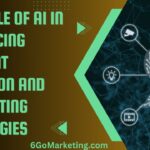Artificial intelligence (AI) has rapidly evolved over the past decade, revolutionizing industries, transforming businesses, and reshaping the way we live and work. As we move forward, AI continues to gain momentum, with new developments that promise to change the technological landscape even further. From advancements in machine learning to ethical challenges, the future of artificial intelligence is full of exciting opportunities and complex challenges.
In this blog post, we will explore The Future of Artificial Intelligence to watch for in the coming years. We’ll examine the latest advancements, discuss potential applications, and explore the ethical implications of AI. By understanding these trends, businesses, individuals, and policymakers can better prepare for a future where AI plays an even more significant role.
1. AI and Machine Learning: The Evolution Continues
At the heart of artificial intelligence lies machine learning (ML), a subset of AI that focuses on creating systems that can learn and improve from experience. Machine learning is already used in a variety of industries, from healthcare to finance, and its impact will only grow as the technology matures.
Key Machine Learning Trends to Watch:
- Deep Learning: Deep learning, a branch of ML, uses neural networks to mimic the workings of the human brain. As computing power increases, deep learning models are becoming more sophisticated, enabling systems to analyze and process vast amounts of data in real-time. This trend will continue, leading to breakthroughs in image recognition, natural language processing, and autonomous systems.
- AutoML (Automated Machine Learning): AutoML allows non-experts to create machine learning models with little to no coding experience. As AutoML tools become more user-friendly, businesses of all sizes will be able to integrate AI into their operations without needing specialized teams of data scientists.
- Explainable AI (XAI): One of the significant challenges in AI is understanding how models make decisions. XAI aims to create AI systems that can explain their decision-making processes in a way humans can understand. This trend is essential for increasing trust and accountability in AI applications.
Table: Key Differences Between Traditional Machine Learning and Deep Learning
| Feature | Traditional Machine Learning | Deep Learning |
|---|---|---|
| Data Requirement | Smaller datasets | Requires large datasets |
| Feature Engineering | Manual feature extraction | Automatic feature extraction |
| Computational Power | Lower | High |
| Application | Structured data | Images, speech, and unstructured data |
| Model Complexity | Simpler models | Complex neural networks |
2. AI in Healthcare: Transforming Patient Care
AI is already having a profound impact on healthcare, with applications ranging from diagnostics to drug discovery. As AI becomes more integrated into healthcare systems, it will revolutionize patient care, making treatments more personalized, efficient, and effective.
Trends to Watch in AI Healthcare Applications:
- AI-Powered Diagnostics: AI is improving the accuracy of medical diagnoses by analyzing vast amounts of patient data, medical images, and genetic information. For example, AI algorithms can detect patterns in X-rays or MRIs that might be missed by human doctors, leading to earlier diagnoses and better treatment outcomes.
- Personalized Medicine: AI will enable more personalized treatment plans based on an individual’s genetic makeup, lifestyle, and medical history. This approach will help doctors tailor treatments to each patient’s specific needs, improving effectiveness and reducing side effects.
- Robotic Surgery: AI-powered robotic systems are assisting surgeons in performing complex procedures with greater precision. These systems can analyze real-time data, allowing surgeons to make more informed decisions during surgery.
Table: Key AI Applications in Healthcare
| AI Application | Description |
|---|---|
| AI-Powered Diagnostics | Analyzing medical images and data for early detection of diseases. |
| Personalized Medicine | Tailoring treatments based on patient-specific data. |
| Virtual Health Assistants | AI chatbots and virtual assistants for patient support. |
| Robotic Surgery | AI-assisted robotic systems for enhanced surgical precision. |
3. AI in Autonomous Systems: The Rise of Self-Driving Cars and Beyond
Autonomous systems, particularly self-driving vehicles, are one of the most anticipated applications of AI. Companies like Tesla, Waymo, and Uber are racing to perfect autonomous driving technology, which promises to reduce accidents, traffic congestion, and emissions.
Trends to Watch in Autonomous Systems:
- Level 5 Autonomy: While current self-driving cars operate at Level 2 or 3 autonomy (requiring some human intervention), the ultimate goal is Level 5 autonomy, where vehicles can drive themselves in all conditions without any human input. Achieving this level of autonomy will require advancements in AI, sensors, and safety systems.
- AI in Drones: Beyond self-driving cars, AI is playing a critical role in the development of autonomous drones for deliveries, agriculture, and surveillance. Drones powered by AI can navigate complex environments, avoid obstacles, and carry out tasks without human intervention.
- AI and Smart Cities: Autonomous systems will also be integral to the development of smart cities. AI-powered traffic management systems, for example, can reduce congestion, optimize traffic flow, and improve public safety.
Table: Levels of Autonomy in Autonomous Vehicles
| Level of Autonomy | Description |
|---|---|
| Level 1 | Driver assistance (e.g., cruise control). |
| Level 2 | Partial automation, requires driver supervision. |
| Level 3 | Conditional automation, can handle most tasks but may require human intervention. |
| Level 4 | High automation, can operate without human input in specific conditions. |
| Level 5 | Full automation, no human intervention required in any condition. |
4. AI and Ethics: Navigating the Moral and Legal Challenges
As AI becomes more prevalent, it raises important ethical and legal questions. Who is responsible if an AI system makes a mistake? How can we ensure AI does not perpetuate bias or inequality? These are just a few of the ethical issues that need to be addressed as AI continues to develop.
Key Ethical Challenges in AI:
- Bias in AI: AI systems are only as good as the data they are trained on. If the data is biased, the AI will be biased as well. This is a significant concern in areas such as hiring algorithms, loan approval systems, and law enforcement applications. Ensuring fairness and eliminating bias from AI systems is a top priority.
- AI and Job Displacement: As AI automates more tasks, there are concerns about job displacement. While AI will create new jobs, it will also make many existing jobs obsolete. Governments and businesses must find ways to retrain workers and prepare for the shift in employment trends. Upskilling and reskilling to navigate this challenge and use a CV match to adapt these changes by helping them design resumes that align with the evolving needs of the job market.
- AI and Privacy: AI relies heavily on data, which raises privacy concerns. The more data AI systems collect, the greater the risk of data breaches or misuse. Regulations like GDPR are designed to protect privacy, but more will need to be done as AI continues to expand.
Table: Ethical Challenges and Potential Solutions in AI
| Ethical Challenge | Description | Potential Solutions |
|---|---|---|
| Bias in AI | AI systems may perpetuate bias based on training data. | Use diverse datasets, regular audits, and transparent algorithms. |
| Job Displacement | AI automation could lead to loss of jobs in various industries. | Invest in reskilling and upskilling programs for workers. |
| Privacy Concerns | AI collects vast amounts of personal data, raising privacy risks. | Stronger data protection laws and AI transparency measures. |
| Accountability | Determining responsibility when AI systems fail. | Legal frameworks for AI accountability and liability. |
5. AI in Education: Personalizing Learning Experiences
AI has the potential to revolutionize education by providing personalized learning experiences, automating administrative tasks, and offering new ways to engage students.
AI Trends to Watch in Education:
- Personalized Learning: AI can analyze student data to provide customized learning paths based on individual strengths, weaknesses, and learning styles. This ensures that each student can learn at their own pace, increasing engagement and improving outcomes. With FoxLMS platform, you can easily create and manage courses, lessons, and quizzes, offering a fully personalized learning experience that caters to each student’s unique journey.
- AI Tutors: AI-powered virtual tutors can provide students with additional support outside of the classroom. These tutors can answer questions, provide feedback on assignments, and offer guidance in real-time.
- Automating Administrative Tasks: AI can automate routine administrative tasks, such as grading assignments, scheduling, and tracking student progress. This allows teachers to focus more on instruction and student interaction.
- Localization for Personalization: AI can adapt educational content to specific languages, cultural contexts, and regional preferences with the help of tools like dubbing AI. This ensures that learning materials resonate with students across diverse backgrounds, fostering inclusivity and enhancing comprehension.
Table: Applications of AI in Education
| AI Application | Description |
|---|---|
| Personalized Learning Paths | Tailoring lessons to individual student needs. |
| AI-Powered Virtual Tutors | Providing real-time support and feedback to students. |
| Automated Grading | Using AI to grade assignments and exams quickly and fairly. |
| Smart Content Creation | AI tools to create personalized learning materials. |
6. AI and Natural Language Processing (NLP): Improving Communication
Natural language processing (NLP) is one of the most exciting areas of AI, enabling machines to understand and respond to human language. NLP is already being used in virtual assistants like Siri, Alexa, and Google Assistant, but its potential extends far beyond that.
NLP Trends to Watch:
- Improved Language Translation: The best AI translator tools like, Google Translate and DeepL are becoming increasingly accurate, allowing for real-time communication between speakers of different languages. These tools can facilitate global business operations and communication across diverse linguistic groups. As NLP technology improves, we may see real-time translation devices becoming more widely adopted in everyday interactions.
- Sentiment Analysis: Businesses are leveraging NLP to analyze customer feedback, social media posts, and product reviews to gauge public sentiment toward their brand, products, or services. By understanding the emotions behind customer comments, companies can make data-driven decisions, refine their marketing strategies, and improve customer service. Sentiment analysis is particularly useful for monitoring brand reputation and responding to potential PR crises.
- Advanced Virtual Assistants: NLP advancements are making virtual assistants like Siri, Alexa, and Google Assistant more capable of understanding context and intent in human language. These assistants will become more intuitive and helpful, allowing users to interact with them using more complex commands and conversations. The future may see virtual assistants handling more sophisticated tasks, from booking appointments to making personalized recommendations based on user preferences and behavior.
- Chatbots and Customer Service: AI chatbots powered by NLP are becoming increasingly effective at handling customer queries and providing personalized support. As these systems improve, they will be able to resolve more complex issues without human intervention, reducing response times and improving customer satisfaction. Chatbots will also be able to escalate issues to human agents more efficiently when needed, enhancing the overall customer experience. Integrating Quiz Plugin WordPress with AI chatbots can further enrich user interaction, as quizzes can be dynamically generated to engage visitors, collect data, or provide personalized recommendations based on their responses.
Table: NLP Applications and Their Benefits
| NLP Application | Description | Benefits |
|---|---|---|
| Language Translation | Real-time translation of spoken and written language. | Breaks language barriers, facilitates global communication. |
| Sentiment Analysis | Analyzing text to understand customer emotions and opinions. | Provides insights into customer feedback, improves brand management. |
| Virtual Assistants | Voice-activated AI that understands and responds to human commands. | Enhances user convenience, automates tasks, improves personalization. |
| AI Chatbots | Automated customer service through natural language interactions. | Reduces response times, handles queries at scale, improves efficiency. |
7. AI and the Internet of Things (IoT): The Smart Ecosystem
AI and the Internet of Things (IoT) are closely linked, and together they are transforming the way we live and work. IoT refers to the network of connected devices that communicate with each other, while AI processes the vast amounts of data these devices generate to provide insights and enable automation.
AI and IoT Trends to Watch:
- Smart Homes: AI-powered IoT devices are revolutionizing home automation. From smart thermostats that learn user preferences to AI-driven security systems that detect unusual activity, smart home technology is making life more convenient and secure. As AI continues to improve, we can expect even more sophisticated smart home ecosystems that automatically adjust settings based on user behavior and preferences.
- Industrial IoT (IIoT): In industries such as manufacturing, AI is playing a key role in optimizing operations. By analyzing data from IoT sensors on machinery and equipment, AI systems can predict maintenance needs, reduce downtime, and improve overall efficiency. This integration of AI and IoT is driving the next wave of industrial automation, also known as Industry 4.0.
- Smart Cities: AI-powered IoT systems are being used to create smart cities that improve urban living. These systems can manage traffic flow, reduce energy consumption, and enhance public safety. AI can analyze data from traffic sensors, weather stations, and security cameras to make real-time decisions that optimize city operations and improve the quality of life for residents.
Table: Applications of AI in IoT Ecosystems
| AI-IoT Application | Description | Benefits |
|---|---|---|
| Smart Homes | AI-powered devices automate lighting, temperature, and security. | Increases convenience, energy efficiency, and home security. |
| Industrial IoT (IIoT) | AI analyzes data from sensors to optimize manufacturing processes. | Reduces downtime, improves efficiency, and lowers operational costs. |
| Smart Cities | AI manages traffic, utilities, and public safety through IoT sensors. | Enhances urban living, reduces congestion, and improves sustainability. |
8. AI in Finance: Automating and Securing Financial Services
The financial services industry is embracing AI to automate processes, reduce fraud, and improve customer experiences. From robo-advisors to AI-powered fraud detection, AI is playing a critical role in the transformation of finance.
AI Trends to Watch in Finance:
- Robo-Advisors: Robo-advisors use AI algorithms to manage investment portfolios, providing personalized investment advice based on individual risk tolerance and financial goals. As AI continues to evolve, these systems will become more sophisticated, offering more tailored financial planning services to a wider audience.
- Fraud Detection: AI is improving fraud detection in the financial sector by analyzing transaction data in real-time and identifying patterns of fraudulent behavior. Machine learning models can detect unusual activity much faster than traditional methods, reducing the risk of financial loss and improving security for customers.
- Algorithmic Trading: AI-powered algorithms are increasingly being used in the stock market to analyze large datasets and execute trades at lightning speed. These systems can make decisions based on market trends and historical data, allowing financial institutions to gain a competitive edge.
- Personalized Banking: AI is enabling banks to offer personalized services to their customers, from tailored loan offers to customized financial advice. By analyzing customer data, AI can predict financial needs and offer relevant products at the right time, improving customer satisfaction and loyalty.
Table: Key AI Applications in Finance
| AI Application | Description | Benefits |
|---|---|---|
| Robo-Advisors | AI systems that provide automated investment management. | Low-cost financial planning, personalized investment advice. |
| Fraud Detection | AI analyzes transaction data to detect and prevent fraudulent activity. | Faster, more accurate detection of fraud, reducing financial loss. |
| Algorithmic Trading | AI-powered algorithms execute trades based on market trends. | Faster, more efficient trading, maximizing returns. |
| Personalized Banking | AI offers personalized financial products and services. | Improved customer satisfaction, tailored financial solutions. |
9. AI and Sustainability: Driving Innovation for a Greener Future
As global concerns about climate change and environmental sustainability grow, AI is emerging as a powerful tool to help tackle some of the world’s most pressing environmental challenges.
AI Trends to Watch in Sustainability:
- AI for Energy Efficiency: AI is being used to optimize energy consumption in industries, homes, and cities. Smart grids powered by AI can balance electricity supply and demand, reducing waste and improving the efficiency of energy systems. AI is also helping businesses track and reduce their carbon footprint by analyzing data from production processes.
- AI in Agriculture: In agriculture, AI is improving crop yields and reducing waste by optimizing irrigation, monitoring soil health, and predicting weather patterns. AI-powered drones and sensors can help farmers manage resources more efficiently, leading to more sustainable farming practices.
- Climate Change Modeling: AI is also being used to model climate change scenarios and predict the impact of environmental policies. By analyzing vast amounts of climate data, AI systems can identify patterns and trends that humans may overlook, helping scientists and policymakers make more informed decisions.
Table: AI Applications for Environmental Sustainability
| AI Application | Description | Benefits |
|---|---|---|
| AI for Energy Efficiency | Optimizing energy consumption in homes, industries, and cities. | Reduces energy waste, lowers carbon emissions. |
| AI in Agriculture | Enhances crop management, irrigation, and soil health monitoring. | Improves yields, reduces resource use, promotes sustainable farming. |
| Climate Change Modeling | Analyzing climate data to predict future environmental impacts. | Helps policymakers make informed decisions on climate actions. |
Conclusion: Preparing for an AI-Driven Future
Artificial intelligence is no longer a futuristic concept—it’s here, and it’s transforming industries across the board. The trends discussed in this post highlight the incredible potential of AI, from revolutionizing healthcare and finance to addressing global environmental challenges.
However, as AI continues to evolve, it is crucial to navigate its ethical implications and ensure responsible deployment. Policymakers, businesses, and individuals must work together to build a future where AI benefits society as a whole.
By staying ahead of these trends and preparing for an AI-driven future, we can unlock new opportunities, solve pressing global issues, and improve the way we live and work in ways that we are only beginning to imagine.










